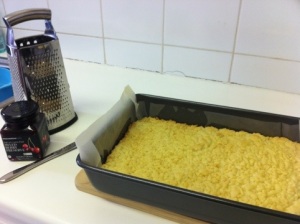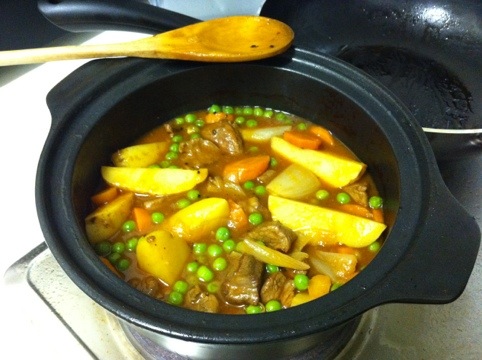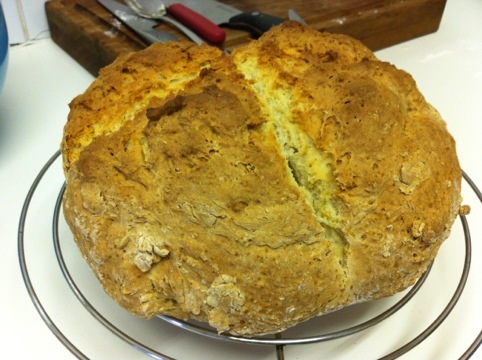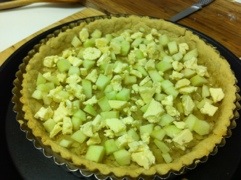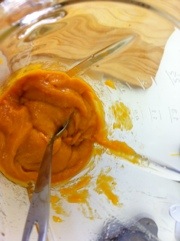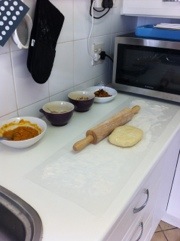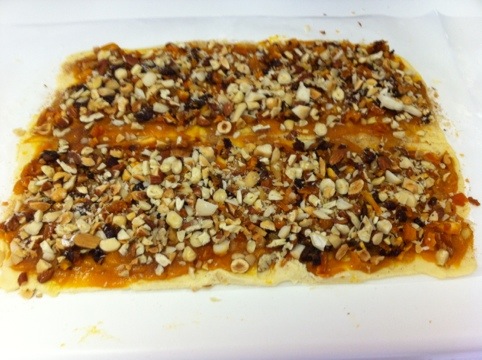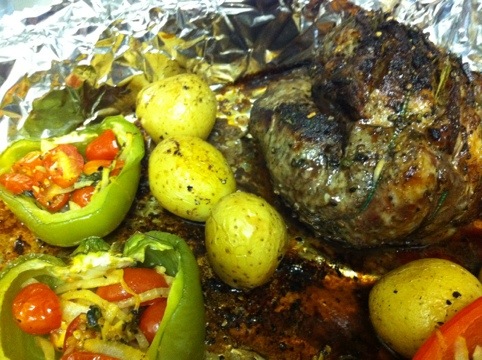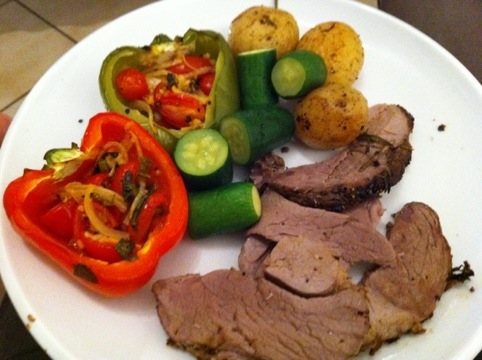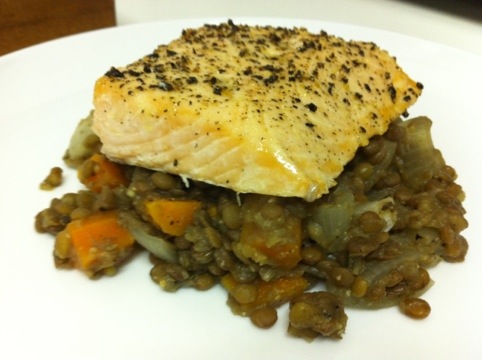Tags
Part of our lives returning to normal after the wedding involves never being home over the weekends. So far we’ve had one trip to my folks in Jo’burg and one to Leon’s folks on the farm. Mostly our time there is pretty much the same as it would be at home and food is still central, with much time spent in the kitchen.
The farm where my in-laws live is near Dundee, in Northern KwaZulu Natal. It’s an underrated area of our country I think, it doesn’t have the romance of the KwaZulu Natal Midlands with its dairy farms and rolling green hills, or the food and wine culture of the Western Cape Winelands, but it is the site of historical battlefields from years gone by and there is a certain beauty in the golden fields and forested hill sides.
The farm is the site of an old coal mine and the first few times I visited my husband took me exploring. All the old buildings are built from red brick and there was essentially an entire community that lived there – there are the remnants of a school and even a Hindu temple. I’m always struck by how the afternoon winter sun reflects off these red brick buildings – they look as though they are glowing, especially against the backdrop of dry, golden grass that grows around them.
My husband is from one of the South African German communities and my friends always ask what we eat when we go to the farm – “is it traditional German food?” – but the truth is, it’s not so different to what I’m used to. This weekend was probably actually the first time that we had a “traditional” German meal – franks, sauerkraut and potato salad. Not just any franks though – they were home-made in the kitchen at the farm and are far superior to anything you could buy in a supermarket!
Every year the church that my in-laws go to holds a bazaar, which includes an extremely popular meat sale. The congregation and any hands they can rope in (ourselves included) work for months beforehand slaughtering, butchering and making a variety of meat products. The operation they have built up over the years is phenomenal and the products they produce are definitely the best I’ve tasted. There is everything from large cuts of pork (oak chip smoked and non-smoked), lamb and beef, to sausages (boerewors, bratwurst, pork bangers, käsegriller), biltong, burger patties and bacon; but the biggest draw card are the deli products – specialties including mettwurst, bierwurst, schinken (unsliced bacon), kassler, ham, pastrami, and paté. Needless to say we aim to stock our freezer for the year!
This weekend, while Leon whiled away time in his Dad’s workshop making us a TV cabinet, I helped my mom-in-law finish off the birthday cake / pudding for my brother-in-law’s birthday. On the menu, bienenstich; this translates into bee sting! It is a bready cake made from yeast dough that is filled with custard after baking and has a topping of honey and nuts. The cake is springy and quite heavy, the custard sweet and thick, and the topping crunchy and sticky.
I’m slowly building up a collection of traditional German recipes, handed down to me by my mom-in-law and from all the women in the community in Dundee at my Kitchen Tea. I’ve a lot to learn, but I think it is really important for these recipes and traditions to be continued in South Africa, even as the community spreads and is more and more diluted by English girls like me. Although from my genetics background the introduction of new genes into this relatively small and close-knit community can only be a good thing!
I’ve included the recipe for bienenstich here, I haven’t made it from scratch yet myself, but I plan to soon – if you try it, let me know what you think!
Bienenstich
Cake
375 g flour
1 pkt (10 g) instant yeast
50 g sugar
1 t vanilla essence
1 t salt
1 egg
200 ml lukewarm milk
50 g butter, melted
- Place butter, milk and sugar on stove and stir over a low heat until mixed well.
- Cool and mix into the dry ingredients and then add the beaten eggs.
- Knead.
- Press into a greased baking tray or cake tin and allow dough to rise until volume doubles.
- Bake at 200 °C for 15 min, then reduce the oven temperature to 180 °C and bake for a further 15 min.
- Allow to cool before cutting in half horizontally and filling with custard.
Custard
2.5 T Maizena (corn flour)
2.5 T custard powder
750 ml milk
100 g sugar
100 g butter
- Mix corn flour and custard powder with a little of the milk to form a paste.
- Heat remaining milk and sugar and then add the custard paste mix.
- Cook until thick and then add 100 g of butter.
- Allow to cool a little and then fill the cake with the custard.
Topping
150 g butter
75 g sugar
1 t vanilla essence
1 T honey
150 g chopped nuts
- Place all ingredients in a bowl and microwave until mixture caramelises and becomes syrupy or toffee like, but at a point that you can still pour it over the cake.
- Allow to cool a little and then spoon over the cake.
Enjoy with tea or coffee.



